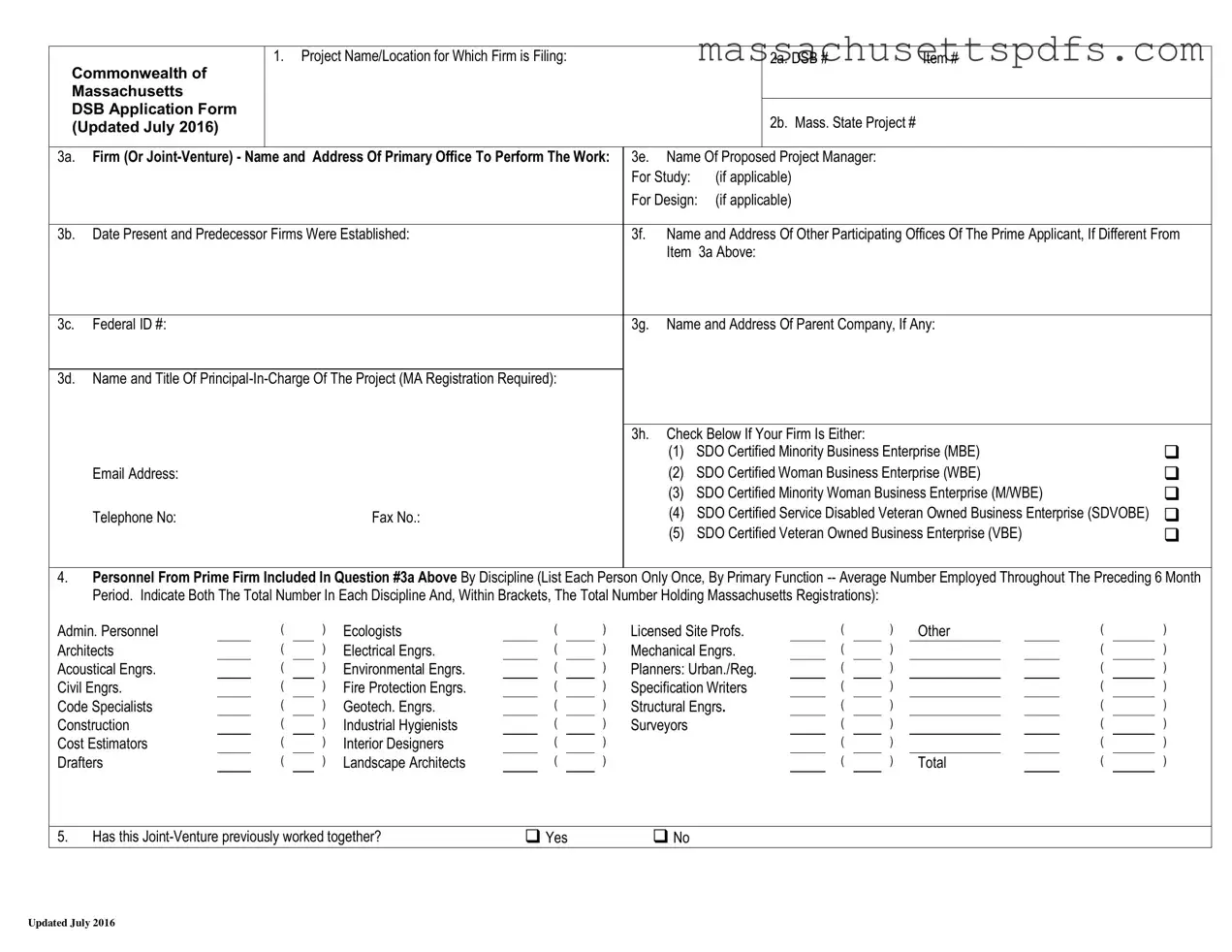Official Massachusetts Dsb Application Template
The Massachusetts DSB Application Form is a crucial document used by firms seeking to participate in state-funded projects. This form collects essential information about the firm, including project details, personnel qualifications, and certification statuses. Completing the form accurately is vital for a successful application process; fill it out by clicking the button below.
Launch Editor Here
